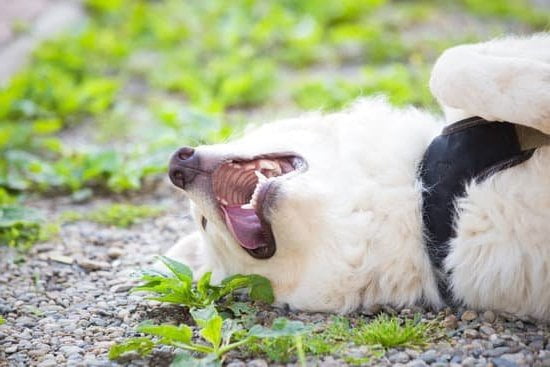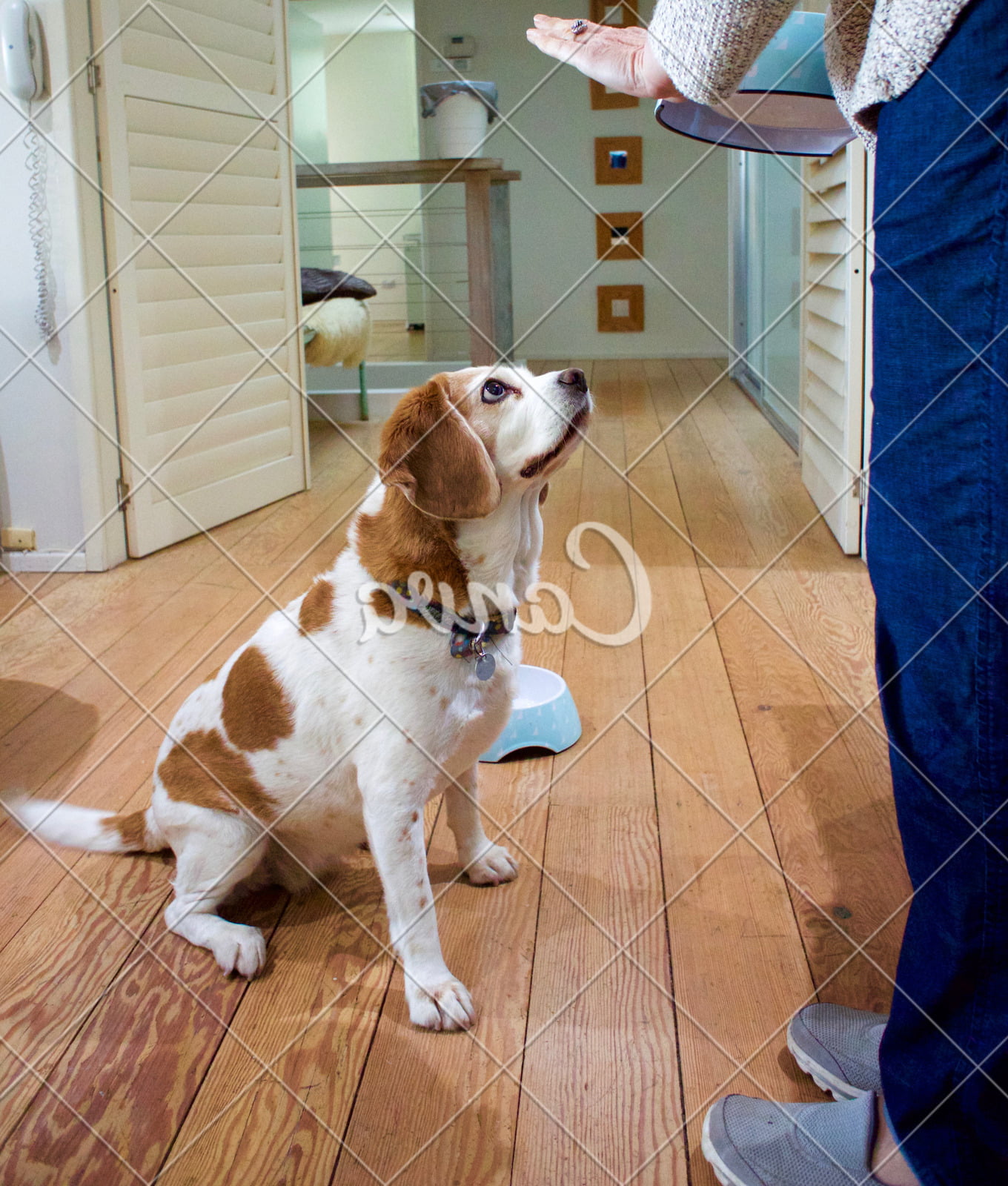Are male dogs harder to toilet train? This question is a common concern for many dog owners, especially those who are welcoming a male puppy into their home. In this article, we will delve into the challenges of toilet training male dogs and explore the science behind their behavior. We will also debunk myths and uncover truths about toilet training male dogs, as well as provide valuable tips and insights for successfully toilet training your male furry companion.
Toilet training a male dog can present unique challenges compared to female dogs. Understanding the reasons behind these challenges and learning effective strategies for addressing them is crucial for a successful toilet training experience. From the science behind male dog behavior to the role of neutering, we will cover all aspects that contribute to the difficulty of toilet training male dogs.
In our exploration, we will also highlight the importance of consistency and positive reinforcement in toilet training. By embracing these principles, you can create a supportive environment that encourages your male dog to learn and develop good toileting habits. Stay tuned as we unravel the intricacies of toilet training male dogs and provide valuable insights for a smooth journey towards success.
The Science Behind Male Dog Behavior and Toilet Training
Understanding Male Dog Behavior
Male dogs, like their female counterparts, have a natural instinct to mark their territory. This behavior is more prominent in male dogs due to their higher levels of testosterone. When bringing a male puppy into your home, it’s important to understand that they may be more prone to marking their territory with urine. This instinctual behavior can present challenges when toilet training.
Finding the Right Training Approach
Toilet training a male dog requires an understanding of their behavioral patterns and tendencies. It’s essential to be patient and consistent in the training process, as every dog is unique and will respond differently to various techniques. Some male dogs may require more time and effort to fully grasp the concept of potty training, while others may catch on quickly.
The Role of Positive Reinforcement
When toilet training male dogs, it’s important to use positive reinforcement techniques. Rewarding them with treats or praise when they successfully go outside can help reinforce good behaviors. Additionally, avoiding punishment for accidents indoors is crucial in maintaining a positive and effective training environment. By understanding the science behind male dog behavior and utilizing positive reinforcement, owners can set their male dogs up for success in toilet training.
Exploring the Myths and Truths About Toilet Training Male Dogs
When it comes to toilet training male dogs, there are several myths and misconceptions that can make the process more challenging for pet owners. One common myth is that male dogs are harder to toilet train than female dogs. However, the truth is that with patience, consistency, and understanding of their behavior, male dogs can be successfully toilet trained just like their female counterparts.
Another widespread myth is that neutering a male dog will automatically solve any toilet training issues. While neutering may have an impact on certain behaviors such as marking territory, it is not a guaranteed solution for toilet training problems. It is essential for pet owners to understand that successful toilet training requires time, effort, and positive reinforcement regardless of whether the dog has been neutered or not.
One of the truths about toilet training male dogs is that understanding their natural instincts and behavior can significantly improve the success of the training process. Male dogs may have a tendency to mark their territory, which can present challenges during toilet training. By being aware of this behavior and using appropriate techniques, such as supervision and redirection, pet owners can effectively address these challenges and successfully train their male dogs to use designated elimination areas.
| Myth or Truth | Explanation |
|---|---|
| Male dogs are harder to toilet train than female dogs. | With patience and consistency, male dogs can be successfully toilet trained like females. |
| Neutering solves all toilet training issues in male dogs. | Neutering may have an impact on behavior but is not a guaranteed solution for toilet training problems. |
| Understanding natural instincts improves success in male dog toilet training. | Awareness of marking tendencies and appropriate techniques can enhance the training process. |
Tips for Successfully Toilet Training Male Dogs
Toilet training a male dog can be challenging, but with the right tips and techniques, it can be a successful and rewarding process. Here are some tips for successfully toilet training male dogs:
- Establish a consistent routine: Set specific times for feeding, potty breaks, and walks to help your male dog understand when it’s time to go outside.
- Use positive reinforcement: Praise and reward your dog with treats or verbal praise each time he goes potty outside. This will reinforce the behavior and encourage him to continue doing his business outdoors.
- Monitor water intake: Limit your male dog’s access to water in the evening to reduce the likelihood of accidents during the night.
It’s also important to be patient and understanding during the toilet training process. Male dogs may take longer to grasp the concept of outdoor pottying, so consistency and positive reinforcement are key. Remember that every dog is different, and what works for one may not work for another.
Additionally, consider using a crate or confinement area when you’re unable to supervise your male dog, as this can help prevent accidents indoors. By following these tips and being diligent in your training efforts, you can successfully toilet train your male dog and enjoy a clean and accident-free home.
The Importance of Consistency and Positive Reinforcement in Toilet Training
Consistency and positive reinforcement are crucial components in the successful toilet training of male dogs. Consistency involves establishing a routine for taking the dog outside to eliminate, as well as consistent praise and reward for desired behavior. Dogs thrive on routine, so taking them out at the same times each day can help them understand when it’s time to go potty. Positive reinforcement, such as verbal praise or treats, reinforces the behavior you want from your dog.
Studies have shown that positive reinforcement is more effective than punishment-based methods when it comes to training dogs. When a male dog successfully eliminates outside, providing verbal praise or giving them a small treat can help reinforce this behavior. Over time, they will associate going potty outside with positive outcomes, making them more likely to repeat the behavior.
It’s important to note that toilet training can take time and patience. Each dog is different and may require varying amounts of time to fully grasp the concept. Consistent training methods and positive reinforcement can go a long way in helping male dogs understand where they should be eliminating.
Understanding the Role of Neutering in Male Dog Toilet Training
Neutering, also known as castration, is the surgical removal of a male dog’s testicles. Many dog owners believe that neutering plays a crucial role in their pet’s toilet training process. This section will delve into the effects of neutering on male dog behavior and its impact on toilet training.
Behavioral Changes After Neutering
After neutering, male dogs experience a decrease in testosterone levels, which can lead to several behavioral changes. Neutered male dogs are generally calmer and less aggressive. They may also exhibit reduced territorial marking behavior, such as lifting their legs to urinate in the house. These changes can positively influence the process of toilet training.
Impact on Toilet Training
Neutering can make toilet training an easier process for male dogs. With decreased levels of testosterone, they are less likely to engage in marking their territory with urine inside the house. Additionally, neutered males are often less driven to roam and find a mate, which means they may be more focused on following their owner’s instructions during toilet training.
The Importance of Timing
It is important to note that while neutering can have positive effects on male dog behavior and toilet training, it is not a quick fix for all potty-training issues. It is essential for owners to start the toilet training process at the right time, regardless of whether their male dog has been neutered or not. Neutering should be seen as one aspect of encouraging good behavior and should be combined with consistent training techniques for successful results.
Dealing With Specific Challenges in Toilet Training Male Dogs
When it comes to toilet training male dogs, there are some specific challenges that pet owners may encounter. Understanding these challenges and how to address them can make the process smoother and more successful. Here are some specific challenges you may face when toilet training a male dog, along with tips for addressing them:
1. Marking Behavior: Male dogs have a natural instinct to mark their territory, which can manifest as lifting their leg to urinate on objects. This can be a challenge when trying to toilet train them to only go outside. To address this challenge, consider using positive reinforcement when your dog urinates in the appropriate spot, such as offering treats or praise.
2. Scent-Marking Indoors: Even after being fully toilet trained, male dogs may sometimes engage in scent-marking behavior indoors. This is often a response to changes in their environment or routine. To prevent this behavior, keep an eye on any potential triggers and consider using deterrent sprays or re-training techniques.
3. Submissive or Excitement Urination: Some male dogs may struggle with submissive or excitement urination, which can make toilet training more difficult. If your dog struggles with this issue, it’s essential to approach training with patience and understanding. Avoid scolding or punishment, as this can exacerbate the problem.
By recognizing and addressing these specific challenges, pet owners can navigate the process of toilet training male dogs more effectively and set their furry friends up for success in the long run.
Conclusion
In conclusion, toilet training male dogs may present its own unique set of challenges, but with the right understanding and approach, it is definitely possible to successfully train them. By delving into the science behind male dog behavior and dispelling myths about their toilet training capabilities, owners can develop a better understanding of how to effectively train their furry companions.
It is important to recognize the significance of consistency and positive reinforcement in the training process, as well as the potential role of neutering in helping to facilitate successful toilet training.
Moreover, embracing the journey of toilet training male dogs means being prepared to face specific challenges that may arise, such as marking behavior and territorial issues. Through patience, perseverance, and a willingness to adapt techniques as needed, dog owners can overcome these obstacles and achieve success in their efforts.
It is also important for owners to seek out tips from experienced trainers and share success stories within the dog owning community to provide support and inspiration for others on the same journey.
Ultimately, toilet training male dogs requires dedication and commitment from dog owners, but with the right knowledge and techniques, it is a journey that can be navigated successfully. By employing the tips and tricks outlined in this article, along with seeking guidance from professionals and other dog owners who have gone through similar experiences, individuals can set themselves up for success in toilet training their male dogs.
With patience, consistency, and positive reinforcement, both dogs and their owners can enjoy a happy and harmonious relationship together.
Frequently Asked Questions
What Gender Dog Is Easier to Potty Train?
There is no definitive answer on which gender of dog is easier to potty train, as it often depends on the individual dog’s personality and temperament. Some people believe that female dogs are easier to potty train because they are said to be more obedient, while others argue that male dogs are easier because they are less territorial.
Ultimately, both genders can be successfully potty trained with patience and consistency.
How Long Does It Take to Potty Train a Male Dog?
The time it takes to potty train a male dog can vary widely based on factors such as breed, age, and individual personality. On average, it can take anywhere from a few weeks to several months for a male dog to become fully potty trained.
Consistent positive reinforcement, a regular schedule for bathroom breaks, and crate training can all help expedite the process of potty training a male dog.
Which Dogs Are Hardest to Potty Train?
Small breeds such as Chihuahuas, Dachshunds, and Bichon Frises are often cited as some of the hardest dogs to potty train due to their strong-willed nature and stubbornness. Additionally, high-energy breeds like Jack Russell Terriers or Siberian Huskies may also present challenges when it comes to potty training due to their independent personalities and need for mental stimulation.
Regardless of the breed, patience, consistency, and positive reinforcement are key when facing difficulty with potty training any dog.

Welcome to the blog! I am a professional dog trainer and have been working with dogs for many years. In this blog, I will be discussing various topics related to dog training, including tips, tricks, and advice. I hope you find this information helpful and informative. Thanks for reading!





